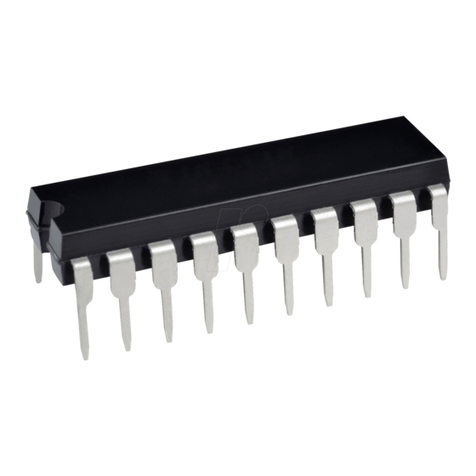
supplied. For more accurate
matching of potentiometer dial-
calibration between ranges, and/o
for greater stability, the user r
may
4. lead
5.
6V
rve correct polarity as
6.
0C)
C
ound.
7.
Hz/V
8.
minal
e
nal is
9. sine /
tentiometer)
er)
10. e
e
tput terminals on
11.
e left
uit
e
12.
es
ude
e.
to
tage.
When not in use, AM terminal
uld be left open-circuited
t and
substitute other capacitors of the
same nominal capacitances.
PRECAUTION: keep the
length short for the range selector
switch (S1 rotary switch)
The JE2206 (function generator
kit) is designed for 12V or +/-
operation but will operate up to a
maximum of 26V or +/-13V.
Whatever supply is used, take care
to obse
otherwise, damage to the IC may
result
The sine / triangle output (terminal
P) amplitude is varied by R12
(50k potentiometer panel mount).
The output impedance is 60
ohms. The square wave (SYN
outputs are derived from a
grounded-emitter transistor
collector connecting within the I
to terminal M. Sync-current at this
terminal should not exceed that
which will pull the LOW voltage
higher than 0.5V above gr
Applied voltage at terminal I for
the purpose of frequency
modulation or sweeping should be
limited to a maximum of +/-3V
about the open-circuit potential of
+3V. The voltage-to-frequency
factor is about 0.00032/CuF
where C is the particular timing
capacitor connected to S!.
Linear amplitude modulation will
occur for input voltages at ter
Q between +/-4V about V+/2. Th
phase of the output sig
reversed and its amplitude goes
through zero at V+/2
Adjust the DC offset of the
triangle output with R9 (1M ohm
potentiometer). Adjust for
minimum sine-wave distortion
with R10 (1k ohm po
and R11 (25k ohm potentiomet
alternately adjusted
SYNC output: the sync output
provides a 50% duty cycle puls
output with either full swing or
upper half swing of the power
supply voltage depending on th
choice of sync ou
the printed circuit board ( see
figures 3 and 4 )
Frequency Modulation (external
sweep): frequency can be
modulated or swept by applying an
external control voltage to sweep
terminal (terminal I). When not in
use, this terminal should b
open-circuited. The open circ
voltage at this terminal is
approximately 3V above th
negative supply voltage and its
impedance is 1000 ohms.
Amplitude Modulation (AM): the
output amplitude varies linearly
with modulation voltage applied to
AM input (terminal Q). The output
amplitude reaches its minimum as
the AM control voltage approach
the half of the total power supply
voltage. The phase of the output
signal reverses as the amplit
goes through its minimum valu
The total dynamic range is
approximately 55dB with AM
control voltage of 4V referenced
the half of the total supply vol
sho
ADJUSTMENT
To adjust for minimum distortion, connect the
scope probe to the triangle / sine wave output.
Close S2 (toggle switch) for sine wave outpu



























